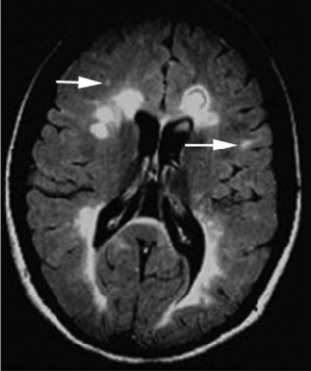
The brain impairment begins well ahead of the tremors, vision issues, or exhaustion that prompt individuals to seek help from a neurologist. Researchers at UC San Francisco have traced the biological origins of multiple sclerosis back to seven years prior to diagnosis, revealing the disease’s covert attack on the nervous system during a time when patients feel entirely healthy.
By examining over 5,000 proteins in blood samples from 134 individuals who would go on to develop MS, the scientists discovered that the immune system starts to deteriorate the protective myelin sheath surrounding nerve fibers years before any symptoms manifest. Myelin damage is observed first, followed around a year later by injury to the nerve fibers themselves. This sequence indicates a cascading effect: initially, the insulation fails, then the wires begin to fray.
The research, published in Nature Medicine, utilized an unusual resource: blood samples taken from military personnel upon their enlistment, which had been preserved by the Department of Defense for many years. Some of these healthy young recruits would later develop MS, allowing researchers to turn back time and observe the disease’s development in slow motion.
A Protein Called MOG Appears First
Seven years before the diagnosis, the researchers detected an increase in MOG, which stands for myelin oligodendrocyte glycoprotein. While the name may sound technical, the implication is unmistakable: myelin is deteriorating. A year after this initial increase, another protein known as neurofilament light chain began to rise in the blood, indicating an assault on the nerve fibers themselves.
Throughout this presymptomatic period, blood samples also exhibited heightened levels of immune signaling proteins, particularly one named IL-3. This protein is recognized for recruiting immune cells to the brain and spinal cord, where they mistakenly target the body’s own nerve tissues. Ahmed Abdelhak, an assistant professor of neurology at UCSF and the study’s primary author, remarked on the implications for early intervention:
“We believe our findings open many avenues for diagnosing, monitoring, and potentially treating MS. It could transform our understanding and management of this condition.”
The researchers pinpointed around 50 proteins that appear to signal impending disease. They have submitted a patent application for a diagnostic blood test using the top 21 of these proteins. Whether such a test would be feasible or cost-effective is yet to be determined, but the scientific evidence suggests that it is theoretically possible to detect MS before it reveals itself through clinical symptoms.
Implications for Prevention
The results raise a pertinent question: if the disease can be identified years before symptoms emerge, is it also stoppable? Ari Green, head of the Division of Neuroimmunology and Glial Biology at UCSF and senior author of the paper, characterized the finding in cautiously hopeful terms:
“We now understand that MS begins significantly earlier than the clinical onset, creating a real possibility that we could one day prevent MS, or at least utilize our insights to protect individuals from further damage.”
MS affects approximately one million individuals in the United States, with most diagnoses occurring in their twenties or thirties. The disease is unpredictable: some individuals experience mild symptoms for years, while others progress rapidly to severe disability. Current treatments can slow the progression but do not reverse existing damage. The sooner treatment begins, the better the outcomes tend to be.
The latest research indicates that by the time a patient visits a clinic with their first neurological complaint, their immune system has likely been attacking their brain for many years. That quiet period, when myelin is being destroyed but nerve function mostly remains intact, may represent the optimal window for intervention. Whether medical professionals will someday screen at-risk populations for presymptomatic MS, similar to current screenings for high cholesterol or prediabetes, is a matter for future studies.
For the moment, the study provides a more detailed understanding of what MS looks like in its initial stages. The disease does not manifest abruptly; it develops gradually, protein by protein, year by year, until the damage reaches a critical threshold and symptoms finally surface.
Nature Medicine: 10.1038/s41591-025-03436-z
There’s no paywall here
If our reporting has informed or inspired you, please consider making a donation. Every contribution, no matter the size, empowers us to continue delivering accurate, engaging, and trustworthy science and medical news. Independent journalism requires time, effort, and resources—your support ensures we can keep uncovering the stories that matter most to you.
Join us in making knowledge accessible and impactful. Thank you for standing with us!